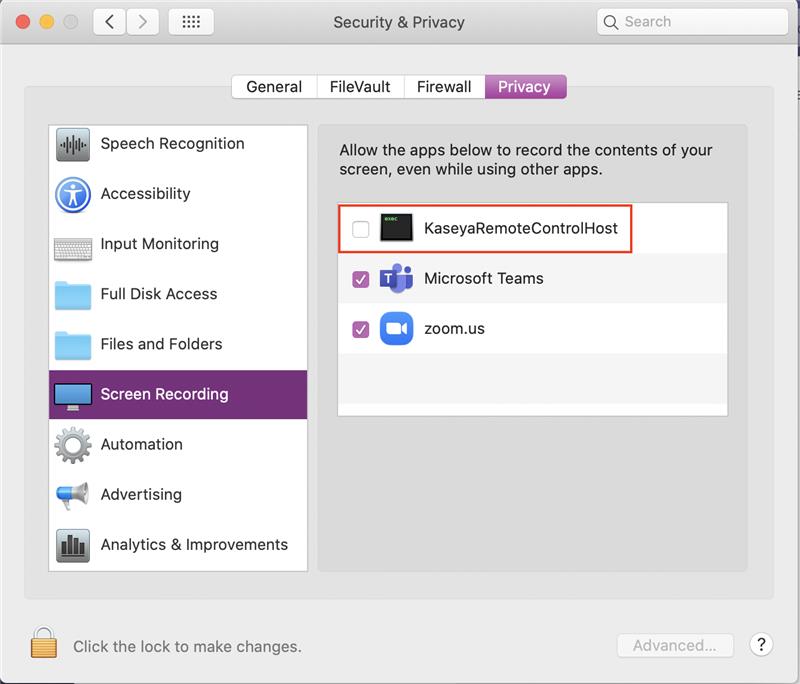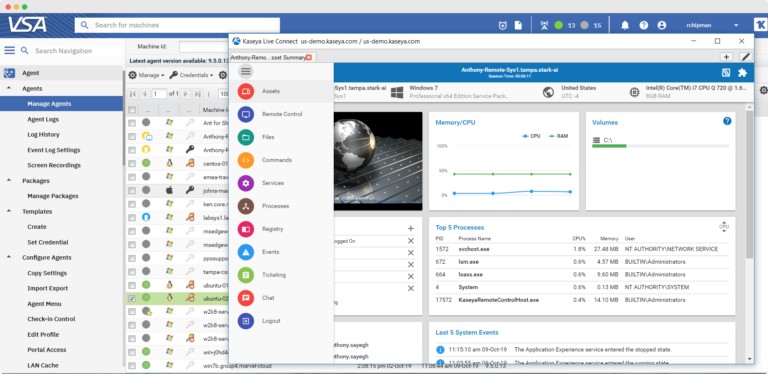

- #Install kaseya agent on mac how to#
- #Install kaseya agent on mac install#
- #Install kaseya agent on mac update#
- #Install kaseya agent on mac password#
If you have problems reinstalling the Agent on a macOS device, it may be necessary to completely remove the Agent from the device. This is to avoid a potential issue of the Agent crashing. IMPORTANT When changing the hostname of a macOS device through the command line (scutil -set HostName), make sure that you add. Once the Agent has been installed, the Datto RMM icon will be displayed in the menu bar of your computer.
#Install kaseya agent on mac install#
#Install kaseya agent on mac password#
IMPORTANT Installation will require a local user password to be entered. IMPORTANT In order for the Agent to function properly on macOS devices, these applications must be listed and checked under System Preferences > Security & Privacy > Privacy in the following sections: For information about which services get installed, refer to Services, dependencies, and folders (Windows, macOS, Linux). You need to have an administrative account on Mac.IMPORTANT For information about supported macOS versions, refer to Operating systems. To uninstall the 'Mac agent', open the 'Agent Distribution' view, select the line displaying 'Mac' as agent type and click on 'Uninstall' from the 'Quick access' panel or the context menu. Mac Agent uninstallation Uninstall from the console
#Install kaseya agent on mac update#
When installing the 'Mac' agent, a configuration is done to save the IP addresses of the UserLock Primary server and the Backup server.Ĭurrently, the 'Mac' agent does not update the configuration when IP adresses of the UserLock servers change. It can be delayed if the logon screen is active. UserLock will start protecting the Mac at next logon. Sudo bash installr.sh $primaryservername $primaryserverport $backupservername $backupserverport This script must be run with root access.


Note: Include the backup server variable only if you are using a backup server. installr.sh $primaryservername $primaryserverport $backupservername $backupserverport
#Install kaseya agent on mac how to#
Click here to see how to change the port number.Ĭopy the shell script file “installr.sh” from the UserLock installation folder of the Primary server (localized by default in 'C:\Program Files\ISDecisions\UserLock') to any folder of the target machine.Īs an administrator, open a Terminal or a SSH session, and run the following script from root: To install the agent manually, you will need an account with administrative rights.īy default, UserLock uses the port 50555 to listen to the Mac Agent. You can find more details on the agent distribution here. make sure the credentials defined in the 'Service Impersonation' section of the 'Server Properties' have access to SSH and can also administrate the Mac.When either performing an automatic deployment or a deployment from console, the following is also required: To install the 'Mac agent', open the 'Agent Distribution' view, select the line displaying 'Mac' as agent type and click on 'Install' from the 'Quick access' panel or the context menu. The procedure to install the Mac agent from the console is the same as for the other agents. The UserLock 'Mac' agent can be installed through the UserLock Console. To monitor sessions on Mac computers, you need to deploy and set the UserLock 'Mac agent'.


 0 kommentar(er)
0 kommentar(er)
